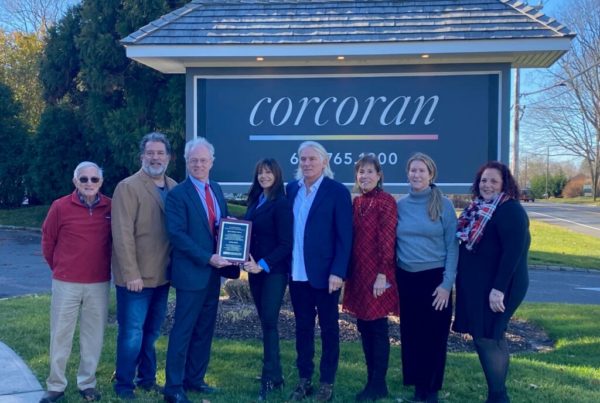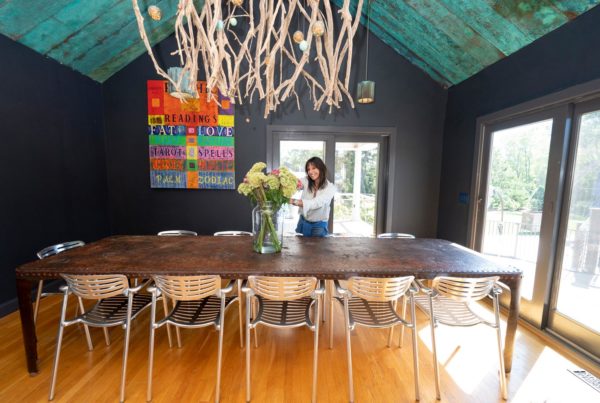A HOME OWNER CAN INCREASE RESALE VALUE WITH A CONSERVATORY
Margaret Higgins loves the elegant glass room on her English Tudor in Manhasset, even though she doesn’t know exactly whom to thank for the renovation.
She’s positive, however, the glass-enclosed conservatory sold her the very first time they walked through the place four years ago. It was for sale, and Higgins, 34, a stay-at-home mother, and husband Todd, an equity trader, had stopped in the room to watch snow fall behind the tall windows. The winter scene, seemingly plucked straight from a glossy magazine, helped persuade them to buy the house in the neighborhood where homes typically sell for between $1.5million and just over $2 million, says Mary Ann Horne, a broker in the Manhasset Office of Daniel Gale Sotheby’s International Realty, who handled the sale. She adds the home had the highest sale value in the neighborhood at the time. “The conservatory most definitely added value,” she says.
Architect T. J. Costello says Higgins’ favorite room can be traced to some cocktail-party chitchat with the former owners over a few glasses of wine. Costello, who lives in the neighborhood, was at a party several years ago when he and the former owners envisioned an airy, glass enclosure that would complement the structure’s more traditional brick facade. So, as architects are wont to do, Costello sketched a design on a napkin. The drawing made such an impression on his hosts that after the party “they called and said, ‘Let’s do this.'”
Costello says the original owners liked the design and the potential advantages – including increasing value and desirablity – of an addition. “They firmly believed it would raise the real estate value,” he says. When they eventually did put the home up for sale, it was snapped up in just five days, he says, owing, at least in part, to the conservatory.
The shimmering result, built in 2000 for about $86,000, is an example of what some say is a growing trend: homeowners’ opting to build conservatories rather than more standard additions, like extra rooms or second stories.
Real-estate agents generally say that, as an investment, a conservatory is a wise bet because it increases overall living space and can enhance a home’s curb appeal. Such artistic visions come with hefty price tags. Today the Higgins’ conservatory would run about $175,000. Costello says the price of building a conservatory has increased more than 50 percent in the past several years. His firm is designing one slightly larger for about $240,000 in Garden City.
In terms of actual resale value, owners in this part of the country can expect to recoup 65.7 percent of the cost, according to Remodeling magazine’s annual report, published in December. It found the average cost of building a conservatory or sunroom in New York is $51,517, while the average resale value is $33,825.
High- and low-end buyers
Whether as an investment or purely for pleasure, the structures are attracting buyers from all ends of the market, agents say. A two-bedroom home in Sound Beach with a conservatory built by Redwin Inc., a Bohemia-based contractor, recently sold for $390,000. Homes with conservatories in Amityville, Holbrook and Upper Brookville sold from roughly $550,000 to $2 million during the past two years.
For those at the upper end, a conservatory can be one more way to customize an already stunning property. Sheri Winter Clary, a senior vice president with the Corcoran group’s Southold office, represents the owners of a $22-million Peconic estate, which includes a conservatory. “It has so many other features, it doesn’t necessarily add to the value of the house,” she says, adding, “but the owners do love having the extra room – and it’s a really nice, snuggly area.”
Similarly, East End developer Michael Burns, who built the 2006 Hampton Designer Showhouse, is also behind a modern Bridgehampton estate on the market for $24.5 million. Its conservatory, which he describes as “a little sculpture,” serves as a pool house and has an outdoor fireplace.
Conservatory designs vary from the traditional Victorian glasshouses originally built to conserve plants during cold-weather months, to more modern geodesic domes. Many are octagonal, with sloped glass roofs and tall glass walls or windows. Sunrooms, a close relative of the conservatory, usually have a solid roof.
Today, these rooms with a view are more likely to be used as dens, studies or rooms for entertaining. The most popular location is just off the kitchen, says Alan Stein of Tanglewood Conservatories, a Maryland-based company that designs conservatories for commercial and residential properties, including some in the Hamptons.
“In England, where the light is low and flat, they’re all the rage,” Costello says. “Here, with the bright sun and shade, sometimes people shy away from them.”
Conservatories seem to be shedding their stodgy British reputation, as homeowners build the glass rooms or sellers buy houses that have them to add light and space. “They may be making a comeback,” Clary says. “Especially with modern houses, where it’s really cool to do a mixture of glass with stone and wood.”
Industry experts say the trend has been building since the ’70s, when insulated glass became available, making the structures functional even during harsh Northeastern winters.
In the past 10 years, more people have been buying custom-designed conservatories, Stein says. “In fact, more custom conservatories are being built in the United States than any other country, largely because Americans have the money, and the climate is conducive,” he adds. According to research, including efforts by the National Sunroom Association, based in Topeka, Kan., conservatory and sunroom construction has experienced a recent 40 percent growth and makes up a $2.5-billion annual industry in the United States.
Enlisting the help of an architect is just one way to add a bright conservatory. While architects can design custom structures and often lead homeowners through building codes and zoning regulations, they also can make sure the conservatory is integrated with the home’s architecture.
Some homeowners forgo custom designers in favor of manufactured conservatories, which can be far less expensive. Dean Steigerwald, president of Conservatories by Designscapes in East Patchogue, installs conservatories from kits that run from $25,000 to $150,000 and come in several standard designs. Buyers choose the type of glass, windows, insulation and a ventilation system, which, along with size, determine the price.
Strategic approach
Marian Savio, 59, a retired teacher, says she thought adding a conservatory to her Stony Brook ranch would give it “more of an outdoor feeling.” She approached Redwin in Bohemia, which sells manufactured units built to fit a site’s dimensions. “They custom-designed it around things like the chimney, and they placed it on an existing deck,” she says. Redwin’s conservatories cost less than an architect’s custom design but more than a pre-built kit, starting at about $40,000.
In addition to cost, another factor is the time conservatories take to install. For Savio, the process took close to a year, from planning the addition to bringing the deck up to code and installing a new tile floor.
Typically, the rooms take six months to a year to finish, so experts suggest homeowners begin planning in the fall if they hope to use them the following summer. For year-round use, homeowners add ceiling fans, screened windows and even upgrade a home’s heating system.
Savio has had the conservatory about two years, and she and her husband, Bennett, a retired high school principal, recently put the house on the market for $569,000.
Like Margaret Higgins, whose three children curl up on the conservatory’s heated floor to watch snow stick to the glass roof, the Savios find their glass room is a draw. “It’s a big selling point,” Marian Savio says. “No matter who walks into my home, they comment on the room.”








